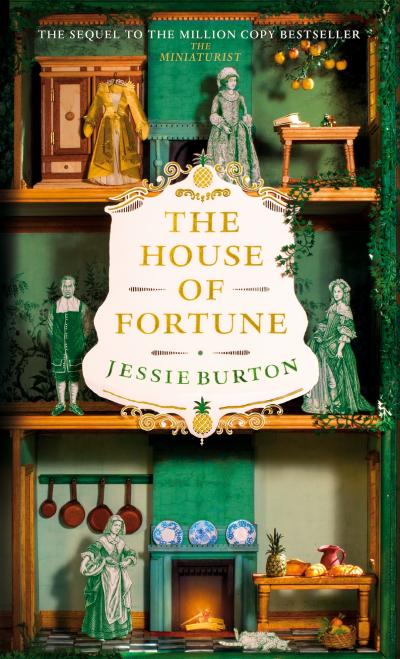A sequel is always a hard thing to write, especially if the book that precedes it is a bestseller, adapted for television and read by more than a million people. Yet Jessie Burton’s The House of Fortune, following as it does on the gilded heels of The Miniaturist (2014), deals with its antecedent with grace, allowing for its larger shade.
Picking up the story eighteen years after The Miniaturist, The House of Fortune returns to the beautiful house on the Herengracht, in Amsterdam, where we left it. Its original owners are dead, one of them executed for the crime of sodomy, the other dead in childbirth. The house echoes with the presence of these ghosts, filling the spaces where their possessions once were, now sold to sustain those who are left, existing in small, warm pockets of a draughty monument.
Thea is the child who remains, raised by her African-Surinamese father Otto, once a servant of the house, her aunt, Nella (the protagonist of The Miniaturist), and their servant, Cordelia. A fat cat, Lucas, lazes around the house as one of the only outward displays of their lost wealth. Whereas The Miniaturist showed the desperation of life in a gilded cage, The House of Fortune shows what it is like when this cage loses its gilt. It also demonstrates how you can never shake off your past, especially when the eponymous miniaturist returns to disrupt the house. It’s difficult to write about without revealing its secrets, but it follows Thea as she falls in clandestine love and the repercussions of this, for herself and for her family.
 The House of Fortune is beautifully described: it’s a book that shows the changes of the year and how, despite any wealth they may have had, the eighteenth-century citizens of Amsterdam ate seasonally and were amazed by a pineapple or a mango. These fruits hold a glamour of sorts, but also the promise of something beyond their stuffy society. There is a magic in The House of Fortune, glimpsed in these fruits and the miniatures that are given to Thea.
The House of Fortune is beautifully described: it’s a book that shows the changes of the year and how, despite any wealth they may have had, the eighteenth-century citizens of Amsterdam ate seasonally and were amazed by a pineapple or a mango. These fruits hold a glamour of sorts, but also the promise of something beyond their stuffy society. There is a magic in The House of Fortune, glimpsed in these fruits and the miniatures that are given to Thea.
Thea struggles with her own societal ostracisation as the illegitimate child of a white, upper class parent and an African servant, which Burton deals with sensitively, not making this the centre of the book but still showing the intense prejudice of the time. Thea is treated badly by the men that she encounters, which could allow for authorial cynicism, but again, this is dealt with with a lightness of touch with room for nuance. These men are charming in their own way, multifaceted despite their obvious flaws.
Indeed, many of the characters in The House of Fortune are given a depth and complexity of emotion that Burton’s original book was criticised for lacking. Nella, still in some ways the protagonist, is torn between duty to her family and her desire for love, but is a well observed product of her circumstances. Likewise, Otto and Thea are characters with intricate and opposing motivations who unfold as the story progresses.
The House of Fortune is a muted sequel, but this seems fitting given the novel and the characters that it follows. It shows the reader what truly happened in the aftermath of the big first book’s ending, even if it wasn’t the happiest. Whilst we, as readers, would like ends tied, each character married off and living out their days happily, The House of Fortune, both as a sequel and a book in its own right, refuses to offer such neatness.
- The House of Fortune by Jessie Burton (Picador, £16.99)
- Read more book reviews and features on theartsdesk















Add comment